(Neuilly-sur-Seine 1930–2002 San Diego) Vache vase, synthetic resin, painted in color, on iron base, signed and numbered 5/10 EA aside from the edition of 50, foundry mark: Resines d’ Art R. Haligon, 54 x 21 x 65 cm, Edition Gérard Haligon, Mandres les Roses Pierre Loos and Jo Van Severen Collections The works of the School of Élisabethville used to belong to these two important and well-known collections. Pierre Loos is a world-wide reference for African paintings from this period and it is because of him that the works by many of Pierre Romain-Desfossés’ pupils have been rediscovered by the European public and are now recognized and appreciated. His collection is one of the most important world-wide, both for the quantity of the works, and for their quality. Jo Van Severen lived and worked in the Congo from 1953 until 1963 and from his return to Belgium until his death, he collected the paintings which represent the country he cherished throughout his life. He bought with a sharp eye for quality, resulting in a vast and important, arguably unique collection. The School of Élisabethville and the Hangar In 1940, Pierre Romain-Desfossés left France to join General de Gaulle in England and he went on a mission to Chad; he stayed at Fort Archambault (now Sarh) and met his orderly Bela, of the Saras tribe, who will always remain by his side and will be one of his most faithful disciples. Demobilized in 1944 and seduced by the extraordinary artistic potential of the locals, he settled down in the Congo, and soon created the Academy of Folk Art of Élisabethville, or ‘Le Hangar’ (the Warehouse), an atelier for a few carefully selected students. He aimed to awaken in his students the ancient, unchanging aesthetic of the memory, and not necessarily teach them how to paint in a European way. To select his pupils, he would put them through a simple test: “Sit under this tree and paint what you see”. He claimed that he could detect talent in this way. Romain-Desfossés then asked them to “explore their world and everything that spoke to their inner being with their eyes”. For this reason, works by pupils who were trained in this way (Pilipili, Bela, Ilunga and Mwenze) mostly depicted nature: hunting, dance and initiation scenes in a narrative and figurative style with a strong decorative character. It’s a world with a naive character at times, where the colours explode and the absence of perspective defies gravity, where the birds swim in the sky and the fish fly in the depth of the ocean. Although the subjects may appear repetitive, each artist develops their own personal style and technique. Bela, whom he nicknamed the Gutenberg of the bush, created works of birds and wildcats using printing techniques with the aid of little wooden plates on a floral background made of small strokes like those of Van Gogh. Mwenze developed very quickly his own style based on the technique of hatching; and when he does paint nature, he gives the man an important place and represents him hunting or fishing, in his daily life, in combat or in full dance. Pilipili, a talented artist who was inspired by the local legends and traditional tales, and whose paintings are filled with small and intense touches of colour. Mode Muntu “the humble man”, was too shy to go and buy his brushes on his own, but his talent has immediately captivated the Europeans arriving in Lubumbashi. His technique, colourful and abstract at the same time, makes of him in many of his works almost an African Keith Haring Sammlungen Pierre Loos und Jo Van Severen Die Werke der Schule von Élisabethville gehörten früher zu diesen beiden bedeutenden und bekannten Sammlungen. Pierre Loos ist eine weltweite Referenz für afrikanische Malerei aus dieser Zeit, und es ist sein Verdienst, dass die Werke vieler Schüler von Pierre Romain-Desfossés von der europäischen Öffentlichkeit wiederentdeckt wurden und heute anerkannt und geschätzt werden. Seine Sammlung ist eine der bedeutendsten weltweit, sowo
(Neuilly-sur-Seine 1930–2002 San Diego) Vache vase, synthetic resin, painted in color, on iron base, signed and numbered 5/10 EA aside from the edition of 50, foundry mark: Resines d’ Art R. Haligon, 54 x 21 x 65 cm, Edition Gérard Haligon, Mandres les Roses Pierre Loos and Jo Van Severen Collections The works of the School of Élisabethville used to belong to these two important and well-known collections. Pierre Loos is a world-wide reference for African paintings from this period and it is because of him that the works by many of Pierre Romain-Desfossés’ pupils have been rediscovered by the European public and are now recognized and appreciated. His collection is one of the most important world-wide, both for the quantity of the works, and for their quality. Jo Van Severen lived and worked in the Congo from 1953 until 1963 and from his return to Belgium until his death, he collected the paintings which represent the country he cherished throughout his life. He bought with a sharp eye for quality, resulting in a vast and important, arguably unique collection. The School of Élisabethville and the Hangar In 1940, Pierre Romain-Desfossés left France to join General de Gaulle in England and he went on a mission to Chad; he stayed at Fort Archambault (now Sarh) and met his orderly Bela, of the Saras tribe, who will always remain by his side and will be one of his most faithful disciples. Demobilized in 1944 and seduced by the extraordinary artistic potential of the locals, he settled down in the Congo, and soon created the Academy of Folk Art of Élisabethville, or ‘Le Hangar’ (the Warehouse), an atelier for a few carefully selected students. He aimed to awaken in his students the ancient, unchanging aesthetic of the memory, and not necessarily teach them how to paint in a European way. To select his pupils, he would put them through a simple test: “Sit under this tree and paint what you see”. He claimed that he could detect talent in this way. Romain-Desfossés then asked them to “explore their world and everything that spoke to their inner being with their eyes”. For this reason, works by pupils who were trained in this way (Pilipili, Bela, Ilunga and Mwenze) mostly depicted nature: hunting, dance and initiation scenes in a narrative and figurative style with a strong decorative character. It’s a world with a naive character at times, where the colours explode and the absence of perspective defies gravity, where the birds swim in the sky and the fish fly in the depth of the ocean. Although the subjects may appear repetitive, each artist develops their own personal style and technique. Bela, whom he nicknamed the Gutenberg of the bush, created works of birds and wildcats using printing techniques with the aid of little wooden plates on a floral background made of small strokes like those of Van Gogh. Mwenze developed very quickly his own style based on the technique of hatching; and when he does paint nature, he gives the man an important place and represents him hunting or fishing, in his daily life, in combat or in full dance. Pilipili, a talented artist who was inspired by the local legends and traditional tales, and whose paintings are filled with small and intense touches of colour. Mode Muntu “the humble man”, was too shy to go and buy his brushes on his own, but his talent has immediately captivated the Europeans arriving in Lubumbashi. His technique, colourful and abstract at the same time, makes of him in many of his works almost an African Keith Haring Sammlungen Pierre Loos und Jo Van Severen Die Werke der Schule von Élisabethville gehörten früher zu diesen beiden bedeutenden und bekannten Sammlungen. Pierre Loos ist eine weltweite Referenz für afrikanische Malerei aus dieser Zeit, und es ist sein Verdienst, dass die Werke vieler Schüler von Pierre Romain-Desfossés von der europäischen Öffentlichkeit wiederentdeckt wurden und heute anerkannt und geschätzt werden. Seine Sammlung ist eine der bedeutendsten weltweit, sowo
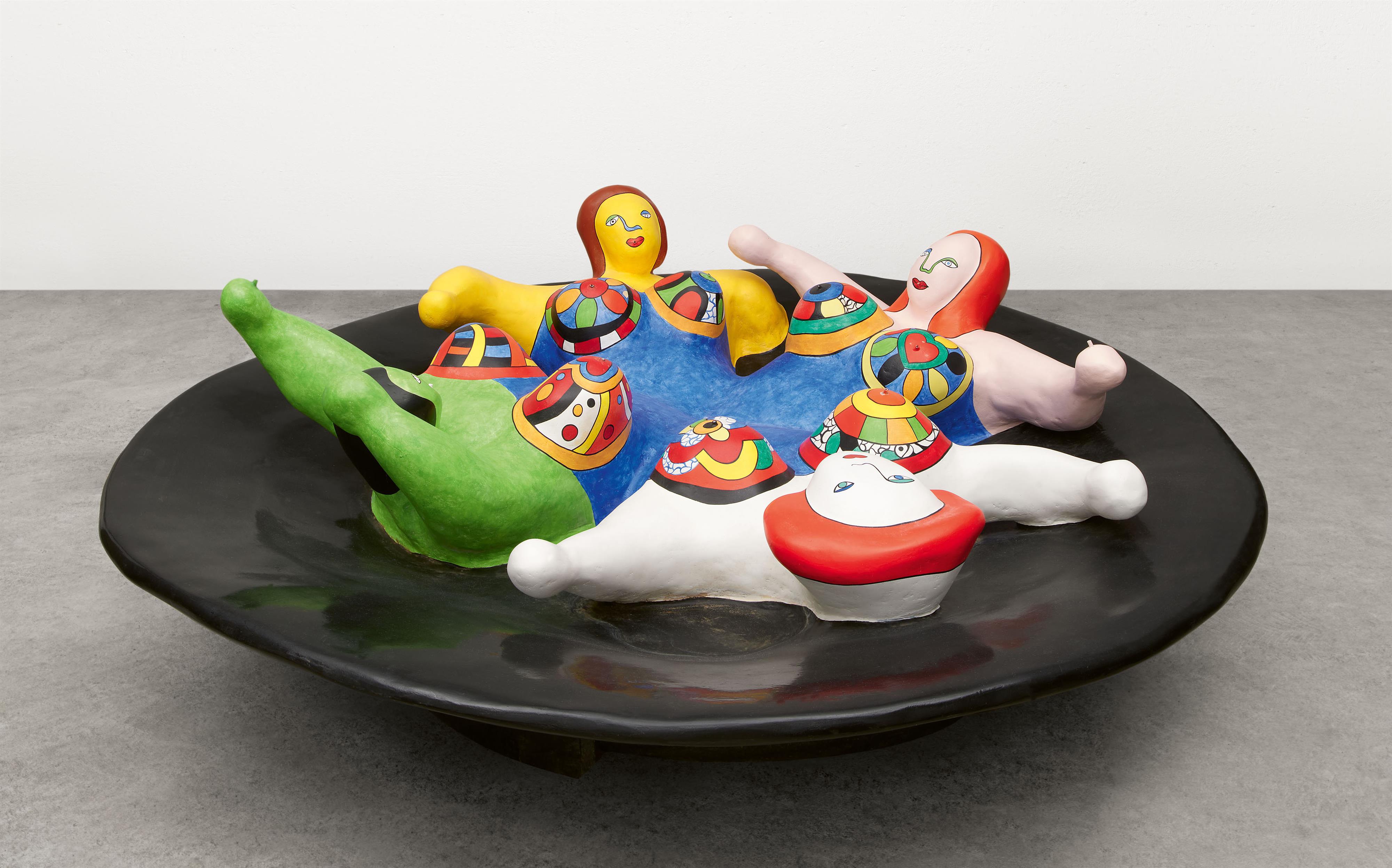



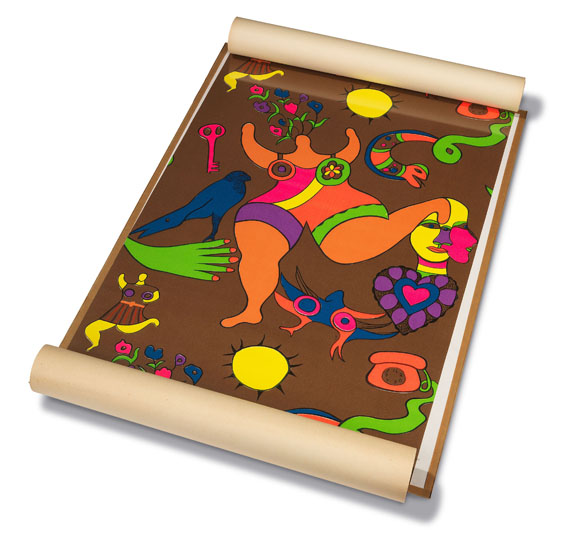
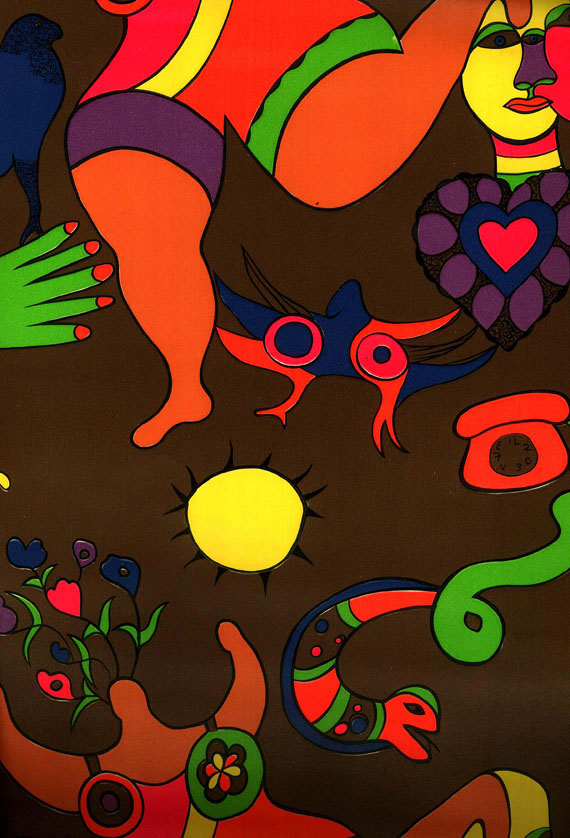
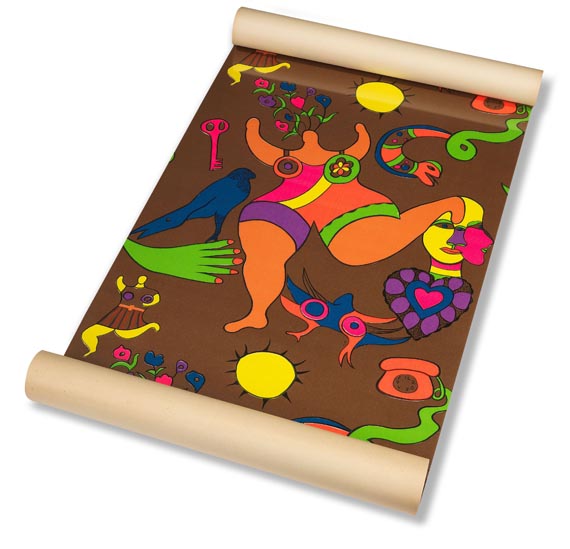
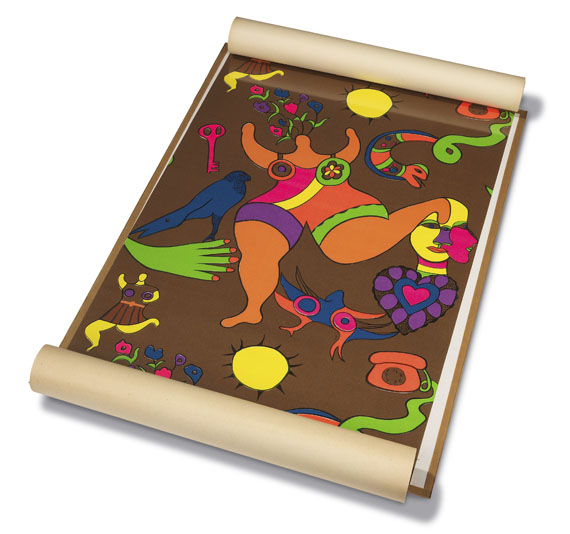

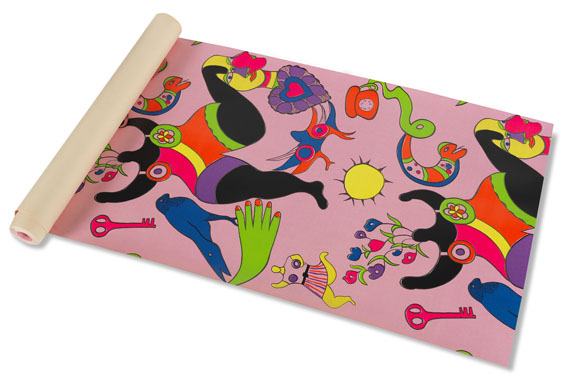
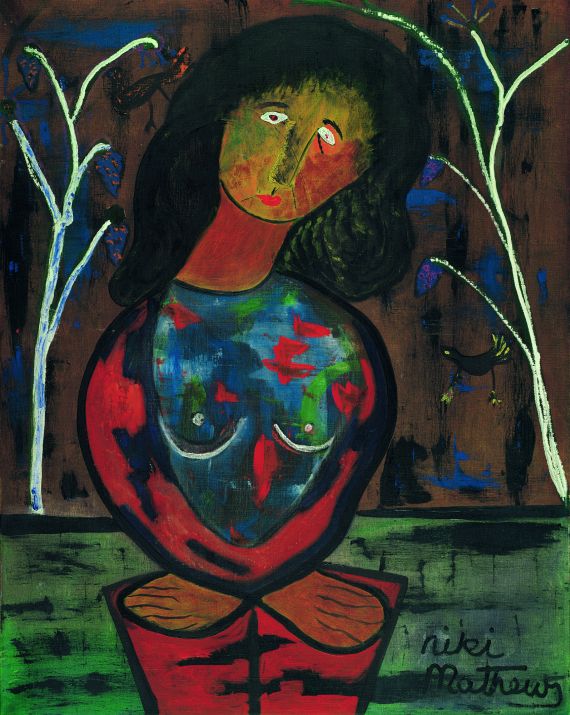
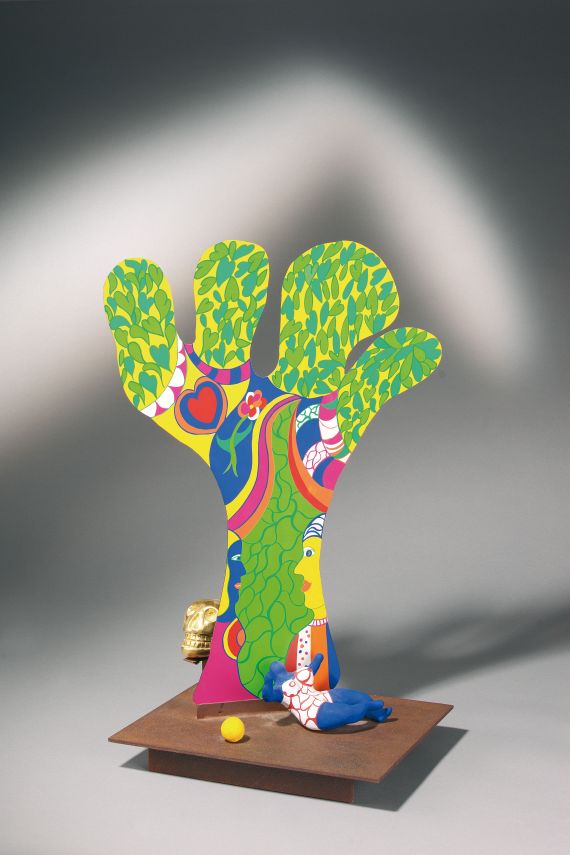
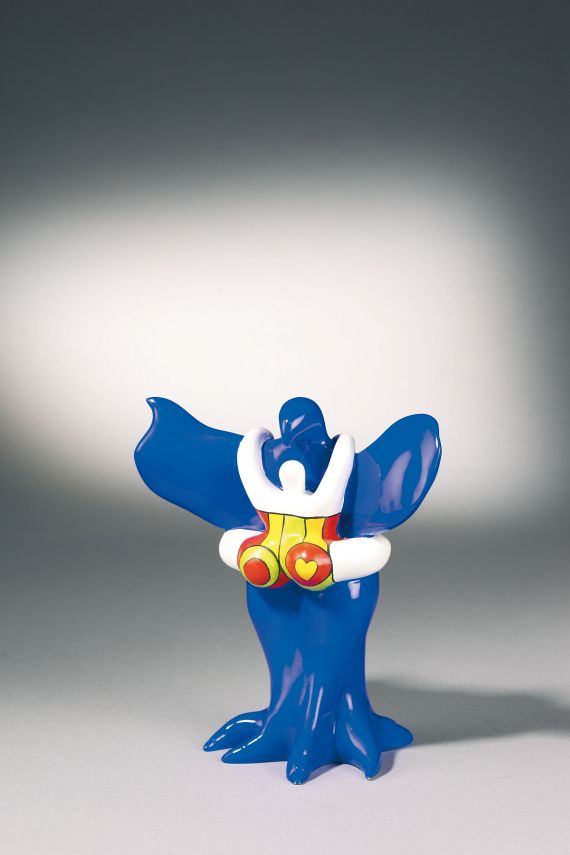


Try LotSearch and its premium features for 7 days - without any costs!
Be notified automatically about new items in upcoming auctions.
Create an alert